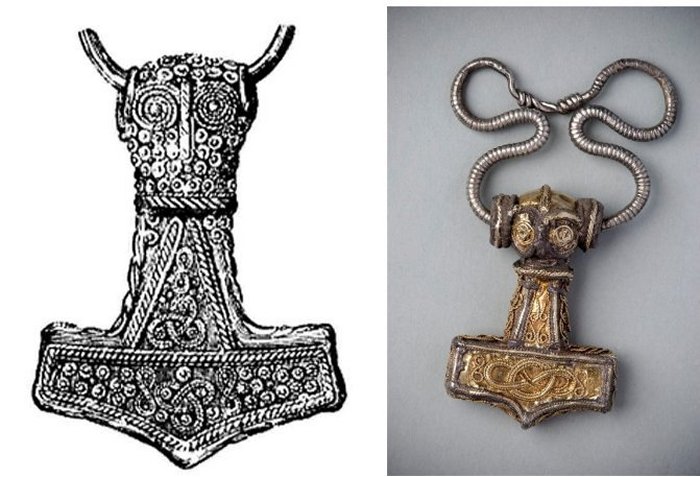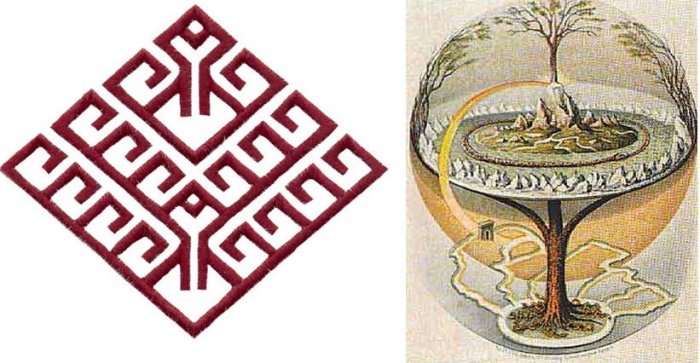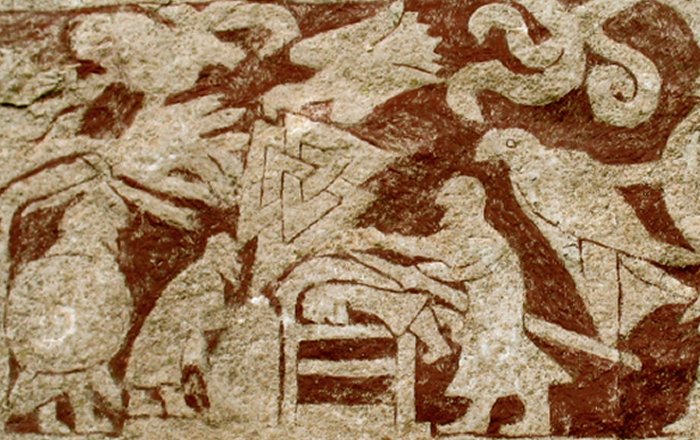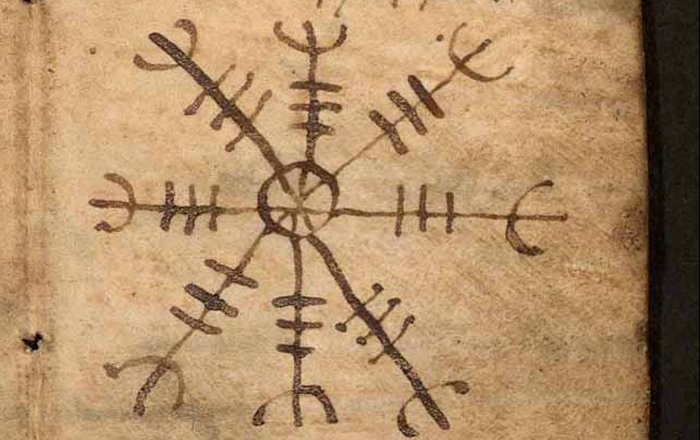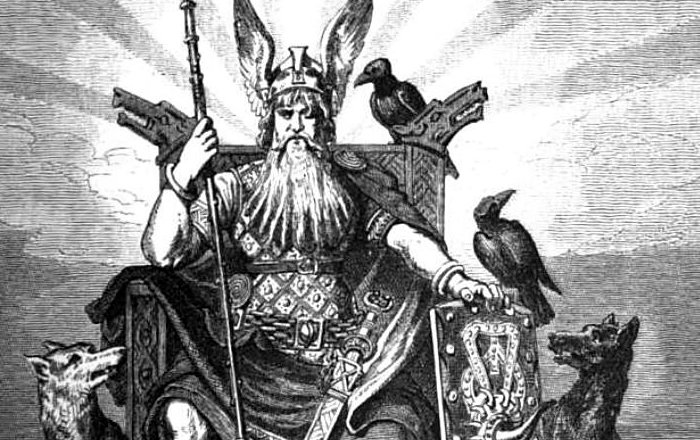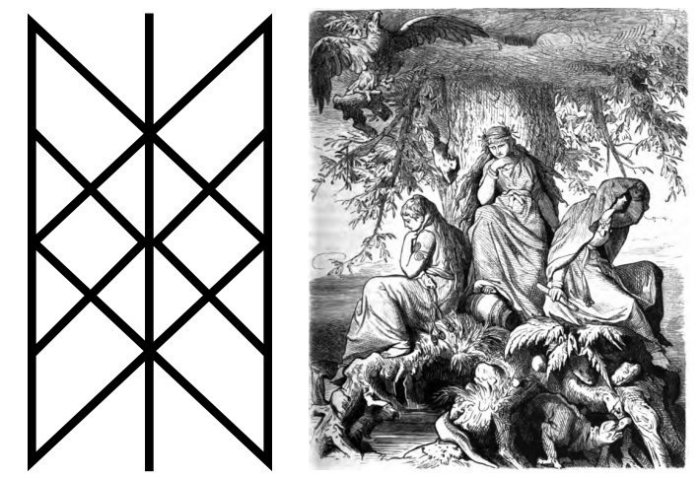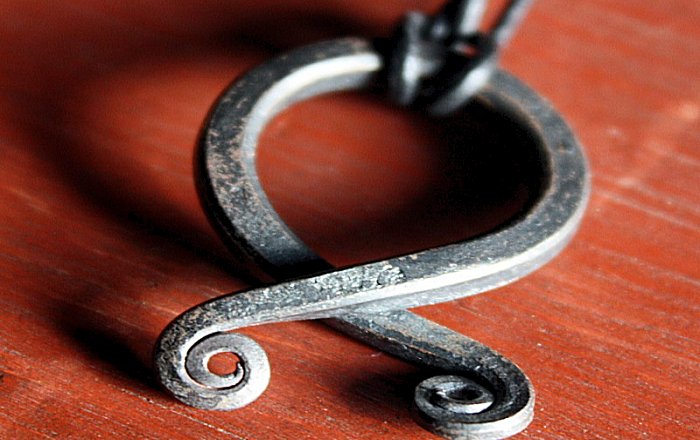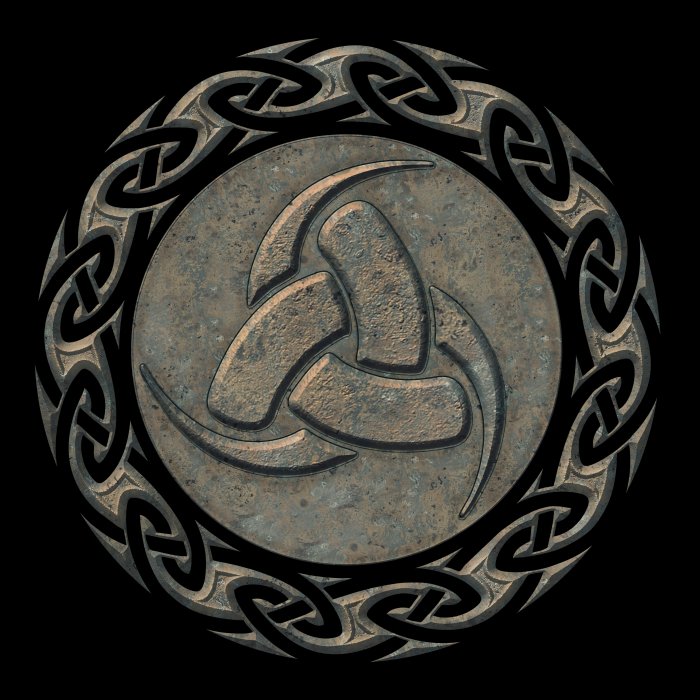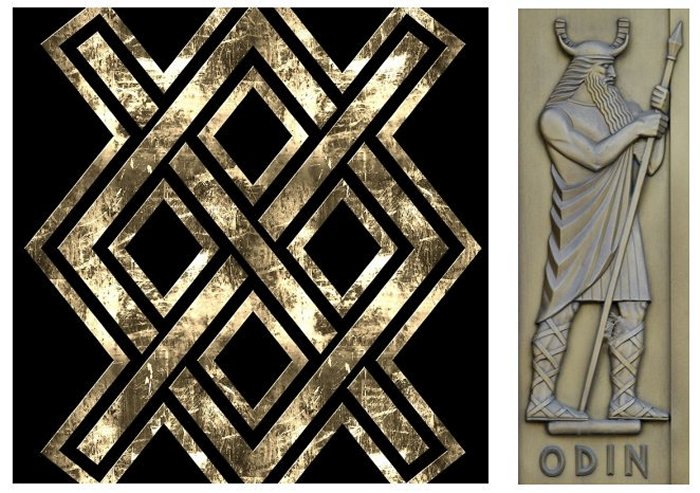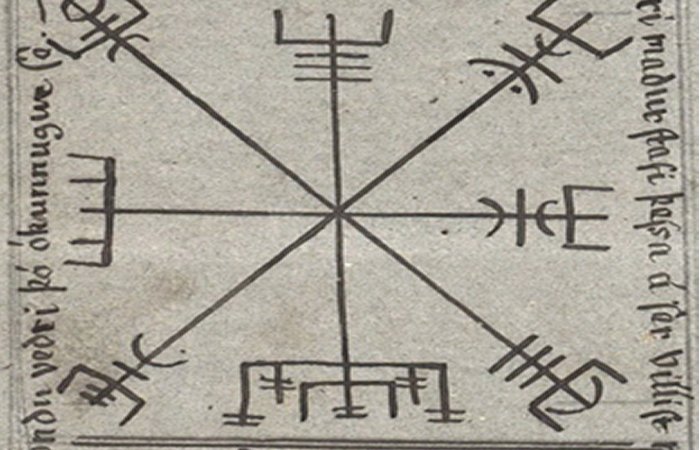10 Viking, Norse And Icelandic Symbols Explained
A. Sutherland- AncientPages.com - Vikings used several ancient symbols based on Norse mythology. Symbols played a vital role in Viking society and represented their gods, beliefs, and myths. Some Viking symbols remain mysterious, and their meaning is still unknown, but many ancient symbols have clear messages.
In this top list, we examine some of the most powerful and significant Viking, Norse, and Icelandic symbols and explore their meaning.
1. Thor’s Hammer - Mjölnir
Left: Drawing of a Viking Age gold-plated silver Mjölnir pendant (length 4.6 cm) found at Bredsätra in Öland, Sweden, now kept in the Swedish Museum of National Antiquities. Right: A 10th-century Thor's Hammer (Mjölnir) from Ödeshög, Sweden. Credit: Gabriel Hildebrand, The Swedish History Museum - CC BY 2.5
Mjölnir means lightning, and Thor's hammer indicates God's power over thunder and lightning. Thor, the ancient God of war, is one of the most prominent figures in Norse mythology. Thor, the storm-weather God of sky and thunder and a fertility god was the son of Odin and Fyorgyn, the earth goddess.
In Norse mythology, Thor's hammer, Mjölnir, is depicted as one of the most fearsome weapons, capable of leveling mountains. One Norse story tells what happened when he lost his precious hammer.
Mjölnir was a magical weapon that always returned to Thor when he threw it. Wearing Thor's hammer as an amulet of protection was quite common as this was probably the most popular pagan Viking symbol. Even during Christian times, from A.D. 1000 on, Vikings wore Thor's Mjölnir and a cross on a chain or thong around their necks.
2. Yggdrasil - Norse Tree Of Life
Left: Yggdrasil symbol; Right: An 1847 depiction of the Norse Yggdrasil as described in the Icelandic Prose Edda. By Oluf Olufsen Bagge
In Norse mythology, the Yggdrasil is a giant mythological tree that holds together the Nine Worlds or realms of existence.
At the very top of Yggdrasil, an eagle lived, and a dragon named Nidhogg lived at the bottom of the tree. Both hated each other and were bitter enemies. The Nine Worlds are guarded by the serpent Jörmungandr. Yggdrasil is one of many variations of the Cosmic Axis or Universal World Tree known to all human cultures and home to many fascinating creatures.
The image of Yggdrasil appears on the famous Överhogdal Tapestry, which dates to the year 1066 and depicts the events of Ragnarok, the doom of the Gods, and the apocalyptic record of the coming comet.
3. Valknut – Viking Symbol For Death In A Battle
Stone fragment from Stora Hammar I, Gotland. A valknut stands prominently in the center, next to a character analyzed as the god Odin, with his characteristic spear . He pushes another figure into a burial mound, while a crow hangs above his head and another man is hanged. Image uploader: The Man in Question - CC BY-SA 3.0
The Valknut is a mysterious Norse symbol, also known as Hrungnir's heart, the heart of the slain, the Heart of Vala, and Borromean triangles. Its true meaning is still debated but often associated with a warrior's death in a battle.
The symbol has been found on old Norse stone carvings and funerary steles. It is sometimes called "Hrungnir's heart," after the legendary giant of the Eddas. It's also possible to find a depiction of the Valknut on stone carvings as a funerary motif, which probably signified the afterlife. The Valknut represents God Odin in art, demonstrating the gods' power over death. A Valknut is also believed to offer protection against spirits, so it is often carried as a talisman.
A Valknut is made of three parts, and the number three is a prevalent magic symbol in many cultures. In this case, the symbolism in Norse mythology showing three multiplied by three might designate the nine worlds united by the Yggdrasil tree. In modern times Valknut, like Triquetra and Horn Triskelion, is often interpreted as a symbol pointing to heathen convictions.
4. The Helm Of Awe - Viking Symbol For Protection
Ancient engraving of Helm of Ægir . It shall be made in lead, and when a man expects his enemies from him he shall imprint it on his forehead from him. And you will conquer him. Public domain
The Helm of Awe is one of the most powerful protective Viking symbols used not only for protection from disease but even to encourage all people who might suffer from depression or anxiety.
In Norse myths, the Helm of Awe symbol was worn between the eyes to cause fear in your enemies and protect against the abuse of power. The Norse word for this significant symbol (Ægishjálmr or Aegishjalmur) is translated in English as "helm of awe" or "helm of terror." The meaning of the name awe is to strike with fear and reverence; to influence by fear, terror, or respect; as his majesty awed them into silence.
5. Huginn And Muninn – The Twin Ravens In Norse Mythology
Odin enthroned and holding his spear Gungnir, flanked by his ravens Huginn and Muninn and wolves Geri and Freki (1882) by Carl Emil Doepler
Among the Aesir gods in Norse mythology, the supreme God, Odin, is frequently depicted sitting on his high seat, Hlidskjalf, in Asgard, the home of the gods.
Odin always has his two raven companions, Hugin (Huginn) and Munin (Munnin), on his shoulders.
Hugin is believed to represent 'memory,' while Munin personifies 'thought.' Odin sends them out daily, and they fly worldwide to seek important news and events. Odin surveys the worlds from Hlidskjalf and must-know reports of what is happening in all Nine Worlds. In the evening, Hugin and Munin return to Odin's shoulders, and during dinner in Valhalla, they whisper all they have heard in his ears.
6. Web Of Wyrd (Skuld’s Net) – Viking Matrix Of Fate
Left: Web Of Wyrd (Skuld’s Net); Right: The Norns - Urðr, Verðandi, and Skuld under the world oak Yggdrasil. Illustration, 1882 by Ludwig Burger via Wikipedia
In Norse mythology, the concept of fate is reflected by the Web of Wyrd created by the Norns, known as ‘Shapers of Destiny. The Norns were goddesses who ruled the fates of people, determining individuals' destinies and lifespans.
With its nine staves, the Web of Wyrd is a matrix of fate that represents past, present, and future events in a person’s life. Norse people believed that everything we do in life affects future events and thus, all timelines, the past, present, and future, are connected.
7. Troll Cross – Protection Against Trolls And Elves
A troll cross amulet. Image credit: Toyah - CC BY 3.0
The troll cross is an amulet made of a circle of iron crossed at the bottom in the shape of an odal rune. Scandinavian people wore it as a protection against trolls and elves. It protected humans, animals, and possessions. It was made of a wrought iron piece and could have a few different forms, but essentially, its two ends must cross.
The magic cross, also known as the troll cross, was a significant part of Swedish folklore. Sorcerers typically carved it on various objects such as doors, windows, furniture, and other household items. This cross served a specific purpose—it was not merely a decorative object but rather a protective symbol intended to prevent trolls or malevolent forces from entering and harming people, animals, or possessions.
Both the magic cross and the troll cross shared the same function and were utilized by early Scandinavian peoples to safeguard their homes and belongings. The troll cross is believed to have originated in the late 1990s, created by a smith named Kari Erlands from the western region of Dalarna, a historical province in central Sweden. It was claimed that the design was based on a protective rune found on her parents' farm, although this claim has not been verified.
These crosses played a crucial role in the folklore and beliefs of the Scandinavian people, serving as a symbolic barrier against perceived supernatural threats and evil forces.
8. The Triple Horn Of Odin
Credit: Adobe Stock - Anne Mathiasz
The Triple Horn of Odin is another symbol of the great Norse God Odin. It consists of three interlocked drinking horns and is commonly worn or displayed as a sign of commitment to the modern Asatru faith. The horns figure in the mythological stories of Odin and are recalled in traditional Norse toasting rituals. In Norse mythology, some tales describe God's quest for the Odhroerir, a magical mead brewed from the blood of the wise God Kvasir. There are several accounts of the story, but typically, Odin uses his wits and magic to procure the brew over three days; the three horns reflect the three draughts of the magical mead.
9. Gungnir – The Spear Of Odin
Left: Gungnir - Viking symbol; Right: Odin (1939). Library of Congress John Adams Building, Washington, D.C.
One of many colorful epithets of the great god Odin was "Lord of the Spear." He owned Gungnir (in Old Norse means "swaying one"), a magical weapon that was unstoppable in its fight and governed the fortunes of war. Gungnir was a formidable weapon created by the dwarves and given to Odin by Loki. The Gungnir never missed its mark; like Mjölnir, Thor's hammer, it always returned to Odin.
In 'Sigrdrivomal,' a part of the Poetic Edda text in Codex Regius, a sailor mentions that Odin carved runes on Gungnir's cape, and they held magical powers. Sometimes Odin entrusted to Hermod's care the precious spear Gungnir, bidding him to cast it over the combatants' heads about to engage in battle.
As the god of war, Odin usually carried the infallible Gungnir spear in his hand, and this fantastic weapon was so sacred that an oath sworn upon its point could never be broken.
10. Vegvisir – Runic Compass
Portion of page 60 of Huld Manuscript ca. 1860 showing two Vegvisir symbols with title and description of use in Icelandic. Image credit: Geir Vigfússon - Public Domain
Vegvisir initially originated in Iceland, where 'Vegur' means - road or path and 'Vísir' means – Guide. The symbol is attested in the Huld Manuscript, collected in Iceland by Geir Vigfusson in Akureyri in 1860. It was frequently inscribed on seagoing vessels to ensure their safe return home.
The device was believed to show the way back home and protect seamen and their ships from storms. The Vegvisir was like a guide helping its bearer to find his way home. Norse people believed the Vegvisir had special powers and treated it as a talisman for luck, protection, and blessings. This powerful symbol could help a person to find the right way in storms or bad weather, whatever unfamiliar surroundings they may encounter.
It has also long played an important role among people who believe in magic powers, such as Norse Shamans. As a spiritual compass, this magical device guides your heart and steps to make the right choices in life. If you have lost yourself and your faith, this sacred symbol helps you find confidence again.
Written by – A. Sutherland - AncientPages.com Senior Staff Writer
Copyright © AncientPages.com All rights reserved. This material may not be published, broadcast, rewritten or redistributed in whole or part without the express written permission of AncientPages.com
Expand for referencesMore From Ancient Pages
-
 Evidence Of Ancient Gigantic Tsunami That Struck Tel Dor Maritime City Mound, Israel
News | Jan 1, 2021
Evidence Of Ancient Gigantic Tsunami That Struck Tel Dor Maritime City Mound, Israel
News | Jan 1, 2021 -
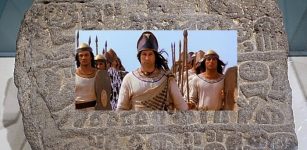 Forgotten Ancient Kingdom Of Tuwana Is Hidden Among Ruins In Cappadocia
Civilizations | Mar 12, 2016
Forgotten Ancient Kingdom Of Tuwana Is Hidden Among Ruins In Cappadocia
Civilizations | Mar 12, 2016 -
 Rare Roman Mosaic Depicting The Adventures Of Greek Hero Achilles Discovered In Rutland, UK
Archaeology | Dec 4, 2021
Rare Roman Mosaic Depicting The Adventures Of Greek Hero Achilles Discovered In Rutland, UK
Archaeology | Dec 4, 2021 -
 Can Peptide Droplets Explain The Emergence Of The First Living Organisms On Earth?
Archaeology | Oct 20, 2021
Can Peptide Droplets Explain The Emergence Of The First Living Organisms On Earth?
Archaeology | Oct 20, 2021 -
 Was Tintagel Castle A Fortress Used By Iconic Hero King Arthur?
Featured Stories | Mar 12, 2016
Was Tintagel Castle A Fortress Used By Iconic Hero King Arthur?
Featured Stories | Mar 12, 2016 -
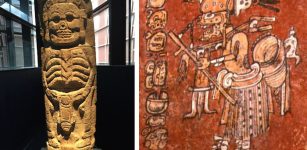 Ah Puch: Evil Death God Of Underworld Who Hated Souls In Maya Beliefs
Featured Stories | Feb 16, 2018
Ah Puch: Evil Death God Of Underworld Who Hated Souls In Maya Beliefs
Featured Stories | Feb 16, 2018 -
 Ancient Secrets Of The Theopetra Cave: World’s Oldest Man-Made Structure And Home To Humans 130,000 Years Ago
Civilizations | May 12, 2016
Ancient Secrets Of The Theopetra Cave: World’s Oldest Man-Made Structure And Home To Humans 130,000 Years Ago
Civilizations | May 12, 2016 -
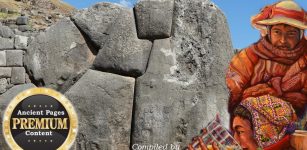 The Untold Story Of The Inca – Mysterious Place Of The Raised Stones – Part 2
Civilizations | Jul 5, 2019
The Untold Story Of The Inca – Mysterious Place Of The Raised Stones – Part 2
Civilizations | Jul 5, 2019 -
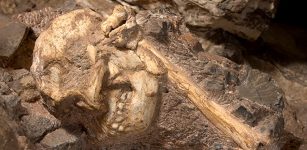 3.6 Million-Year-Old Rare Skeleton Of Human Ancestor Revealed By Researchers In South Africa
Archaeology | Dec 7, 2017
3.6 Million-Year-Old Rare Skeleton Of Human Ancestor Revealed By Researchers In South Africa
Archaeology | Dec 7, 2017 -
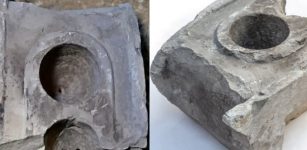 2,000-Year-Old Measuring Table With Stone Weights Unearthed In Jerusalem
Archaeology | Jan 16, 2020
2,000-Year-Old Measuring Table With Stone Weights Unearthed In Jerusalem
Archaeology | Jan 16, 2020 -
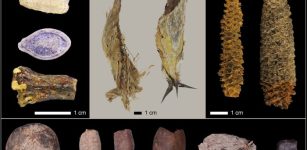 El Gigante Offers Lessons In Sustainability, Evolution And Human Adaptation, Courtesy Of The Holocene
Archaeology | Jun 29, 2023
El Gigante Offers Lessons In Sustainability, Evolution And Human Adaptation, Courtesy Of The Holocene
Archaeology | Jun 29, 2023 -
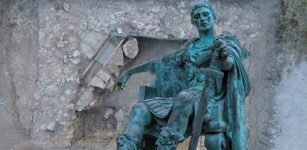 Major Discovery Of Ancient Roman Temple – Largest Evidence Ever Of The Imperial Cult
Archaeology | Jan 5, 2024
Major Discovery Of Ancient Roman Temple – Largest Evidence Ever Of The Imperial Cult
Archaeology | Jan 5, 2024 -
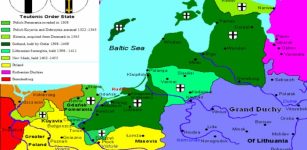 On This Day In History: Battle Of Rudau Was Fought – On Feb 17, 1370
News | Feb 17, 2017
On This Day In History: Battle Of Rudau Was Fought – On Feb 17, 1370
News | Feb 17, 2017 -
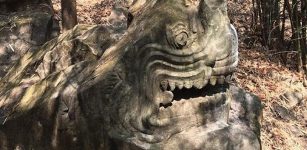 Ancient Statue Of Makara, Legendary Sea-Creature Found In Cambodia
Archaeology | Jan 29, 2020
Ancient Statue Of Makara, Legendary Sea-Creature Found In Cambodia
Archaeology | Jan 29, 2020 -
 Enigma Of San Bernardo Mummies That Refuse To Decompose
Featured Stories | Nov 7, 2018
Enigma Of San Bernardo Mummies That Refuse To Decompose
Featured Stories | Nov 7, 2018 -
 Neolithic Ceramics Reveal Dairy Processing From Milk Of Multiple Species
Archaeology | Mar 15, 2023
Neolithic Ceramics Reveal Dairy Processing From Milk Of Multiple Species
Archaeology | Mar 15, 2023 -
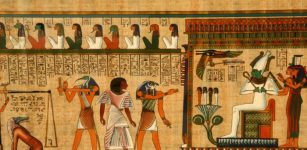 First Book Of Breathing: Egyptian Papyrus Sheds Light On Funerary Text Helping The Deceased In Afterlife
News | Oct 22, 2020
First Book Of Breathing: Egyptian Papyrus Sheds Light On Funerary Text Helping The Deceased In Afterlife
News | Oct 22, 2020 -
 3,000-year-old knight discovered at the Palidli necropolis
Civilizations | Aug 22, 2015
3,000-year-old knight discovered at the Palidli necropolis
Civilizations | Aug 22, 2015 -
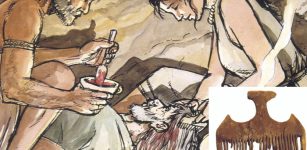 Evidence Of Hallucinogenic Drug Use During Bronze Age Ceremonies Found
Archaeology | Apr 6, 2023
Evidence Of Hallucinogenic Drug Use During Bronze Age Ceremonies Found
Archaeology | Apr 6, 2023 -
 Traces Of A 9,000-Year-Old Lost Unknown Civilization Discovered In Lake Huron, Michigan
Civilizations | Aug 11, 2014
Traces Of A 9,000-Year-Old Lost Unknown Civilization Discovered In Lake Huron, Michigan
Civilizations | Aug 11, 2014

